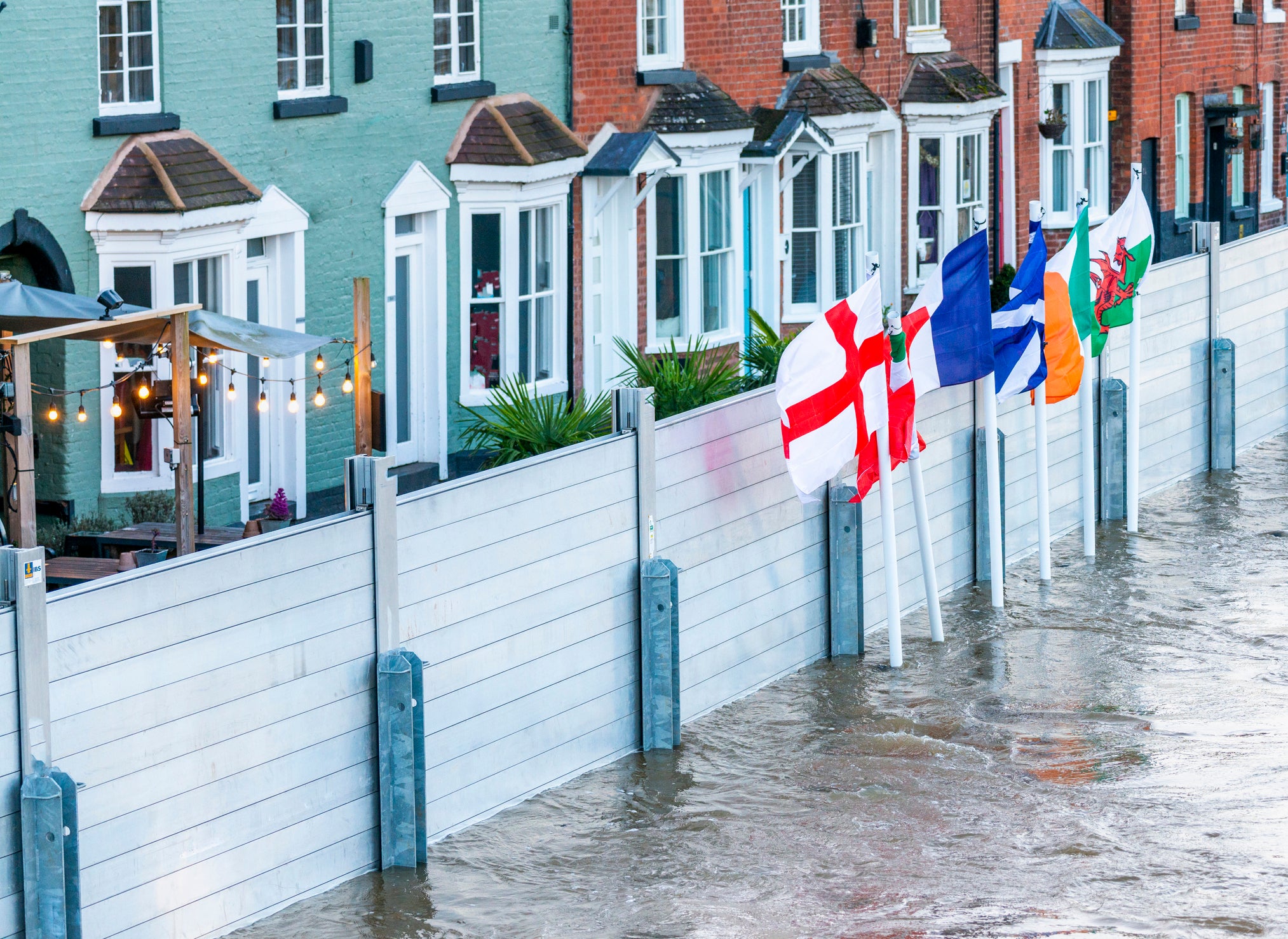Billions needed to cut flood risk for hundreds of thousands of homes
600,000 UK properties to face flooding as climate crisis worsens, without major investment on drainage and nature-based solutions

Your support helps us to tell the story
From reproductive rights to climate change to Big Tech, The Independent is on the ground when the story is developing. Whether it's investigating the financials of Elon Musk's pro-Trump PAC or producing our latest documentary, 'The A Word', which shines a light on the American women fighting for reproductive rights, we know how important it is to parse out the facts from the messaging.
At such a critical moment in US history, we need reporters on the ground. Your donation allows us to keep sending journalists to speak to both sides of the story.
The Independent is trusted by Americans across the entire political spectrum. And unlike many other quality news outlets, we choose not to lock Americans out of our reporting and analysis with paywalls. We believe quality journalism should be available to everyone, paid for by those who can afford it.
Your support makes all the difference.Around 600,000 homes and businesses face growing flood risks over the next 30 years unless major action is taken to overhaul drainage infrastructure and tighten up controls on new property developments.
Investments totalling around £12bn are needed to upgrade drains in England to cut the risk posed by surface water flooding, as the impacts of the climate crisis worsen, the National Infrastructure Commission has warned.
Rising global temperatures are resulting in warmer air masses able to hold much more water, exacerbating storms and incidences of heavy rain and flooding.
The impacts of extreme weather caused by changing environment, alongside the increasing pressure on drainage systems caused by new developments, could push an additional 230,000 properties into the high-risk category by 2055, the report said.
"The spread of impermeable surfaces – such as the paving over of gardens – could move another 65,000 properties into a high-risk area," the authors of the report warned.
Localised floods across England last month alongside a series of major flooding incidents in London in 2021 – which affected 1,500 properties and disrupted healthcare and transport networks – have highlighted the risks posed by surface water flooding.
At present, 325,000 English properties are currently in areas "at high risk" from this type of flooding, which means they have a 60 per cent chance of being flooded in the next thirty years.
The report says the first step is to stop adding to the problem by limiting the knock-on effects of urban spread on existing drainage systems.
The country also must expand existing drainage capacity both above and below ground, including the use of nature-based solutions such as green gulleys and flood storage ponds, the report said.
This will help address the fragmented way in which the problem is managed and funded, and “will improve the resilience of drainage systems to more frequent and heavier downpours”.
The report comes as UK water companies begin to lift hosepipe bans following the record summer drought and heatwave, which compromised the country’s water supplies.
At the height of the drought, numerous reports highlighted the benefits of slowing the passage of water across the landscape, from returning rivers to their original meandering courses, to the reintroduction of beavers, both of which can alleviate flood risks and also reduce the impacts of drought.
The report calls for greater levels of intervention by the Environment Agency and Ofwat, but they said new approaches should be developed in partnership with local authorities and water companies.
Professor Jim Hall, National Infrastructure commissioner, said: “It’s clear that faced with more intense rainfall and increased urbanisation, we need to start taking this type of flooding far more seriously.
“The solution is clear – reducing the amount of water flowing into drains, whilst also improving the capacity of those drains. That means stopping urban creep from increasing the amount of storm water that drainage systems have to cope with and giving nature more opportunities to hold on to excess water, as well as targeted investment to ensure sewers can cope with growing pressures.
“While sustained investment is needed, the estimated additional costs are relatively modest. At least as important is a more joined-up approach to owning and acting on the problem.”
The Independent has contacted the Environment Agency for comment.
Join our commenting forum
Join thought-provoking conversations, follow other Independent readers and see their replies
Comments